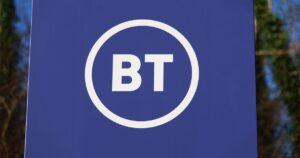William Grace-Hunter doesn’t exist, though this may not be immediately obvious from his LinkedIn profile. The “senior investment consultant at BlackRock” is a highly opinionated reply guy, albeit with only one interest and one post to his name:
“There is no such thing as an investment consultant at BlackRock” said a spokesperson for the asset manager, who added that had the person been a real employee commenting on an individual stock or issuer on social media it would have been a disciplinary matter.
LinkedIn has been facing a growing tide of disinformation. The social media network blocked more than 58mn accounts between July and December 2022, up from 22mn in the first six months of the year, according to its most recent transparency report:
And while systems exist to spot profile cloning and spam accounts, artificial intelligence has made identification more difficult. A study by the Stanford Internet Observatory in 2022 identified more than 1,000 active profiles using what appear to be faces created by AI.
“Fake profiles have an adverse effect on the trustworthiness of the network as a whole, and can represent significant costs in time and effort in building a connection based on fake information,” write Shalinda Adikari and Kaushik Dutta of Cornell University in a 2020 paper.
Their research suggests that by targeting recently created profiles with no avatar, narrow engagement and limited biographical information, fakes could be weeded out with a very high accuracy. It’s not a strategy LinkedIn currently applies, so prominence may be given to profiles such as the ones shown below:
To be clear, behind each of these profiles may be real people with sincerely held opinions. For anyone who feels their viewpoint is being ignored, all kinds of social media can seem to provide a megaphone.
It is LinkedIn’s status as a corporate safe space — which Microsoft has worked to defend following its 2016 purchase of the site — that makes these low-quality posters an existential concern. The platform consistently ranks near the top for phishing attempts, according to cyber security company Check Point Research, while NordLayer finds that more than half of US-based businesses report having been targeted by scammers via the site.
LinkedIn said last year it was strengthening systems to keep “inauthentic profiles and activity” off the platform, including making public when accounts had been created and whether the user had verified their phone number and work email.
But having turned 20 this year, the proliferation of fake profiles is only one of LinkedIn’s problems to solve. Low quality content and narrow engagement can manifest on even the most verified of accounts:
LinkedIn and THG, the subject of Grace-Hunter’s only post to date, did not respond immediately to our requests to comment.
Update 5.50pm BST:
Grace-Hunter is no more. A LinkedIn spokesperson said: “We use technology and teams of experts to help keep our community safe and trustworthy. 99 per cent percent of detected spam and scams were removed by our automated defenses and 99.6 per cent of detected fake accounts were blocked before members reported them. When we receive reports of fake accounts we quickly take action, as we did in this case.”














